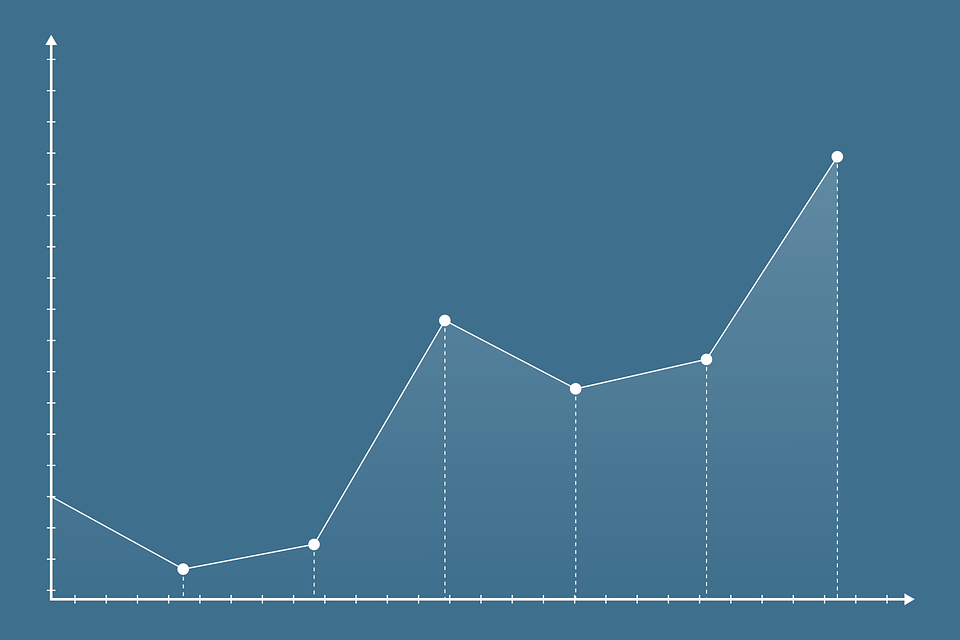Trading refers to the buying and selling of financial instruments, such as stocks, bonds, commodities, currencies, and derivatives, with the goal of making a profit from changes in their prices. Trading can be done in various markets, such as stock markets, bond markets, commodity markets, foreign exchange markets (forex or FX markets), and options and futures markets.
Trading can be done by individual investors, institutional investors, or professional traders who buy and sell financial instruments in order to capitalize on price movements. Traders may use different strategies and techniques, such as technical analysis, fundamental analysis, quantitative analysis, or a combination of these approaches, to make trading decisions.
There are different types of trading, including:
- Stock trading: Buying and selling shares of publicly traded companies on stock exchanges.
- Bond trading: Buying and selling bonds issued by governments, corporations, or other entities.
- Commodity trading: Buying and selling commodities such as oil, gold, silver, agricultural products, and other raw materials.
- Forex trading: Buying and selling currencies in the foreign exchange market, often referred to as forex or FX trading.
- Options and futures trading: Buying and selling options and futures contracts, which are derivatives that give the right or obligation to buy or sell an underlying asset at a specified price and time in the future.
Trading can be done through various channels, including online trading platforms, brokerage firms, financial institutions, and other market participants. It involves risks, including the potential for loss of capital, and requires knowledge, experience, and careful consideration of factors such as market conditions, risk management, and trading strategies. It’s important for traders to have a thorough understanding of the financial instruments they trade and the risks involved before engaging in trading activities.
How to Find Perfect Stocks in Trading
Finding “perfect” stocks in trading is subjective and can vary depending on individual preferences, investment goals, and risk tolerance. Here are some general steps to help you in the process of identifying potential stocks for trading:
- Define your trading objectives: Determine your trading goals, risk tolerance, and time horizon. Are you looking for short-term gains or long-term investments? Are you willing to take higher risks for potentially higher returns, or do you prefer a more conservative approach?
- Conduct fundamental analysis: Fundamental analysis involves evaluating a company’s financial health, business model, competitive position, management team, and other factors that can affect its stock price. Look for companies with strong financials, favorable industry trends, and a competitive advantage. Review financial statements, earnings reports, and other relevant news and information to assess the company’s fundamental strengths and weaknesses.
- Perform technical analysis: Technical analysis involves studying price charts, volume, and other market data to identify patterns, trends, and potential entry and exit points. Use technical indicators, chart patterns, and other tools to help you identify potential trading opportunities based on historical price and volume data.
- Stay informed with market news and events: Stay up-to-date with the latest news, market trends, and events that may impact stock prices. Follow financial news websites, market research reports, and earnings announcements to stay informed about company-specific and broader market developments that may affect stock prices.
- Develop a trading plan: Create a well-defined trading plan that outlines your trading strategies, risk management rules, and entry and exit criteria. Stick to your plan and avoid impulsive trading decisions based on emotions or short-term market fluctuations.
- Use risk management techniques: Implement risk management techniques such as setting stop-loss orders, diversifying your portfolio, and managing position sizing to protect your capital and manage your risk exposure.
- Consider technical and fundamental factors together: Remember that both technical and fundamental analysis can be useful in identifying potential stocks for trading. Consider using a combination of technical and fundamental factors to make informed trading decisions.
- Practice with paper trading: Consider using paper trading or virtual trading platforms to practice your trading strategies and gain experience without risking real money. This can help you refine your trading skills and build confidence before trading with real money.
It’s important to note that trading stocks involves risks, including the potential for loss of capital. It’s essential to conduct thorough research, use proper risk management techniques, and have a disciplined approach to trading. It’s also recommended to consult with a qualified financial professional before making any trading decisions.
Whats the best way to predict the stocks ups and down

Predicting stock market movements, including the ups and downs of individual stocks, is inherently challenging and often involves a high degree of uncertainty. The stock market is influenced by various factors, including macroeconomic trends, geopolitical events, company-specific news, investor sentiment, and many other variables, which can be difficult to accurately forecast. However, here are some approaches that traders and investors may use to try to predict stock market movements:
- Fundamental analysis: This involves evaluating a company’s financial health, business model, competitive position, industry trends, and other fundamental factors to assess its intrinsic value and growth prospects. By analyzing financial statements, earnings reports, and other relevant information, fundamental analysis seeks to determine whether a stock is overvalued or undervalued, which can help in predicting potential ups or downs in stock prices.
- Technical analysis: This involves studying historical price and volume data, chart patterns, and technical indicators to identify patterns, trends, and potential entry and exit points. Technical analysis assumes that historical price patterns may repeat in the future and can help in identifying potential price trends or reversals, which can assist in predicting stock price movements.
- Sentiment analysis: This involves monitoring market sentiment, investor emotions, and market indicators to gauge market sentiment and predict potential changes in stock prices. Sentiment analysis may involve tracking news sentiment, social media sentiment, option market sentiment, or other market indicators that can provide insights into market sentiment and potential stock market movements.
- Data-driven models: This involves using quantitative techniques, such as statistical models, machine learning algorithms, and artificial intelligence, to analyze historical data, market data, and other relevant information to predict stock market movements. These models may incorporate various variables, such as technical indicators, fundamental data, and sentiment data, to generate predictions or forecasts of stock prices.
- Expert analysis: This involves seeking insights from experienced market analysts, financial professionals, or investment research firms who may provide their opinions and predictions on stock market movements based on their expertise, research, and analysis.
It’s important to note that no approach or method can guarantee accurate and consistent predictions of stock market movements. The stock market is inherently unpredictable, and there are always risks involved in trading and investing. It’s crucial to conduct thorough research, use proper risk management techniques, and have a disciplined approach to trading or investing. Consulting with a qualified financial professional and staying informed with the latest market news and trends can also be beneficial.
How to prevent loss in Trading
Preventing losses in trading is challenging, as trading inherently involves risks and uncertainties. However, here are some strategies and tips that traders may consider to help mitigate losses:
- Develop a trading plan: Having a well-defined trading plan with clear objectives, risk tolerance, and entry/exit criteria can help you make informed trading decisions and avoid impulsive or emotional trading. Your trading plan should also include proper risk management strategies, such as setting stop-loss orders, limiting position sizes, and diversifying your portfolio.
- Use stop-loss orders: Stop-loss orders are pre-set orders that automatically trigger a sell or buy order when a stock reaches a specific price level. Placing stop-loss orders can help you limit your losses by automatically exiting a trade if the stock price moves against your position beyond a predetermined level.
- Set realistic profit targets: Setting realistic profit targets can help you lock in profits and avoid holding on to a position for too long, hoping for further gains. Having a clear profit target in mind and taking profits when your target is met can help you prevent potential losses if the stock price reverses.
- Diversify your portfolio: Diversifying your trading portfolio by investing in a range of different stocks, sectors, or asset classes can help spread out your risks. If one stock or sector performs poorly, other investments in your portfolio may offset the losses.
- Stay informed and do research: Keeping yourself informed about the latest market news, trends, and company-specific developments can help you make more informed trading decisions. Conducting thorough research, analyzing financial statements, and understanding the underlying fundamentals of the stocks you trade can also provide valuable insights and help you make better-informed trading decisions.
- Practice proper risk management: Risk management is crucial in trading to prevent losses. Setting a maximum percentage of your trading capital that you are willing to risk on each trade, and adhering to this risk limit, can help you manage your overall trading risk and prevent excessive losses.
- Control emotions: Emotions, such as fear, greed, and impulsiveness, can significantly impact trading decisions and lead to losses. Practicing emotional discipline, maintaining a calm and rational mindset, and avoiding impulsive trading decisions can help you prevent emotional trading mistakes that may result in losses.
It’s important to remember that trading involves risks, and losses are inevitable in trading at times. No strategy or approach can guarantee complete loss prevention. It’s crucial to carefully assess your risk tolerance, develop a trading plan, and use proper risk management techniques to minimize losses and protect your trading capital. Seeking advice from qualified financial professionals and continuously learning and improving your trading skills can also be beneficial.
What is Trading
Trading refers to the buying and selling of financial instruments, such as stocks, bonds, commodities, currencies, and derivatives, with the goal of making a profit.
How to Find Perfect Stocks in Trading
Finding “perfect” stocks in trading is subjective and can vary depending on individual preferences, investment goals, and risk tolerance.
Whats the best way to predict the stocks ups and down
Predicting stock market movements, including the ups and downs of individual stocks, is inherently challenging and often involves a high degree of uncertainty.








